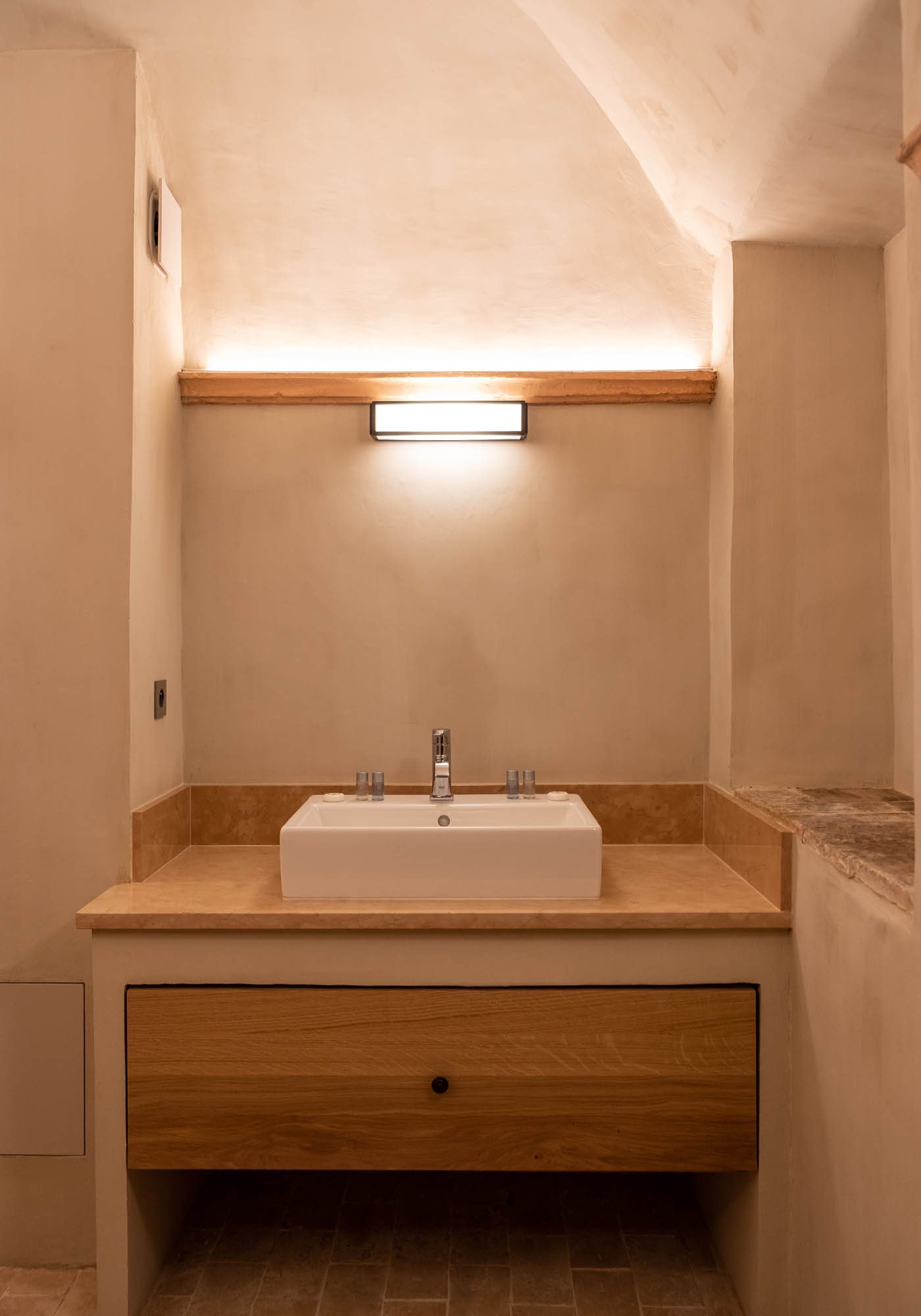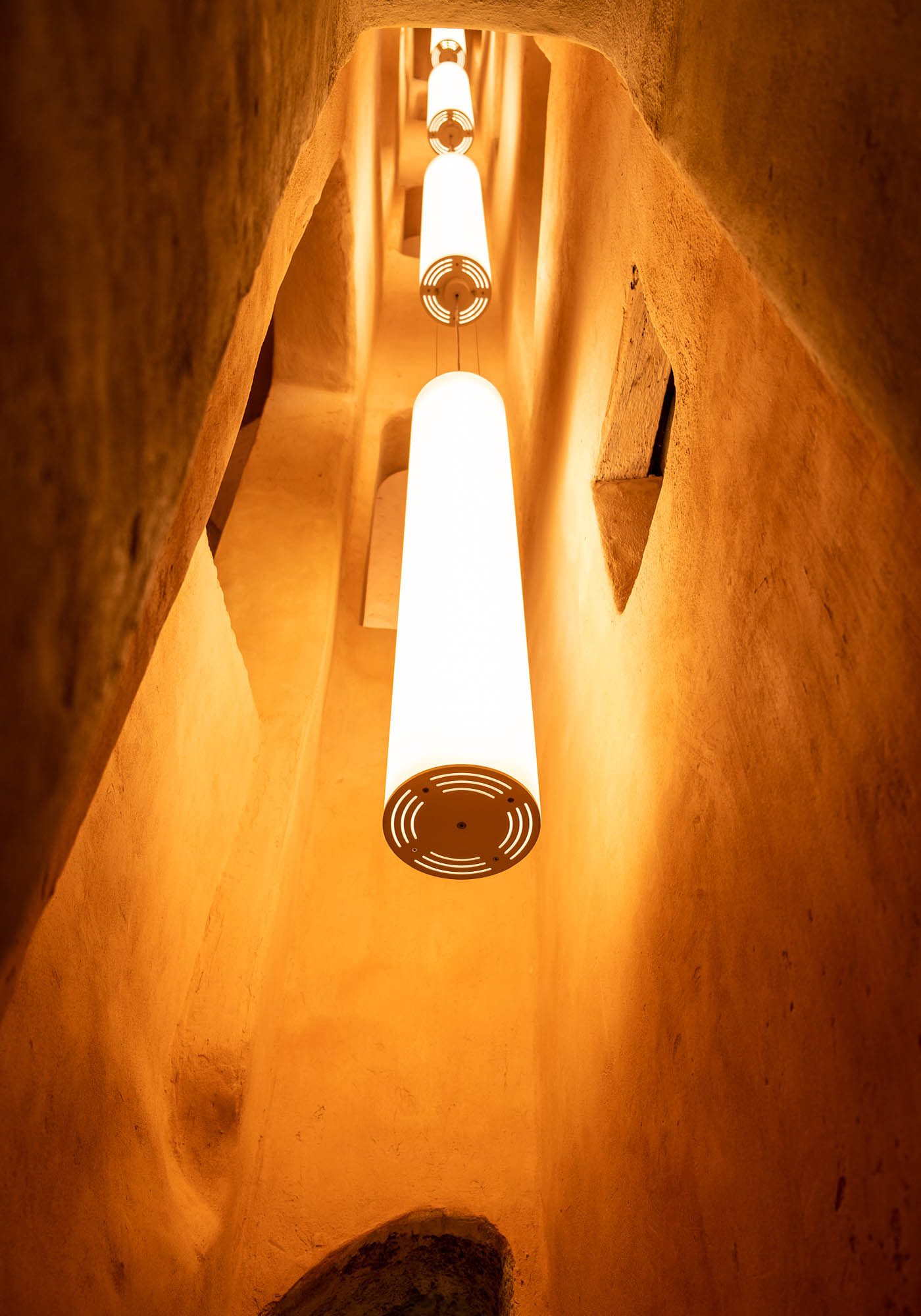It took several years to restore the Château de Vaugrenier, a Palladian building from the early 16th century, now classified as a Historical Monument. Historical archives research conducted by Grahal established that this imposing residence was the country house of Lord of Villeneuve-Loubet, built in the 1500-1510s by René “the Bastard of Savoie” and left unfinished due to his premature death on an Italian battlefield.







The second phase, overseen by the Direction Régionale des Affaires Culturelles, with the support of Sophie Tramonti, a Heritage Architect, began with a precise survey of all existing floors and a polychromatic analysis of the various coatings applied to the walls. Because the planned rehabilitation had to remain as faithful as possible to the original spirit that prevailed during construction and minimize any impact on the building, it was necessary to decipher the modifications that had already been made to the building since its original state. The owner aimed to showcase the building by making it partially accessible to the public for cultural events such as seminars, conferences, private concerts, or exhibitions. Consequently, it was necessary to provide each of the four levels with running water, electricity, a sewage system, central heating, and air conditioning, all of which the Château lacked completely! A procedure was developed and approved to pierce the vaults and conceal all the vertical networks behind partition walls, mainly in the bathrooms. A plaster vault was reconstructed in one of the two side rooms, while the finely crafted molding in the main hall was meticulously restored. The choice of very simple oak woodwork, almost in its natural color, aimed to evoke the original spirit of the place. The colors of the final lime wash correspond to the oldest shades found during the polychromatic research




 projet précédentprojet suivant
projet précédentprojet suivant